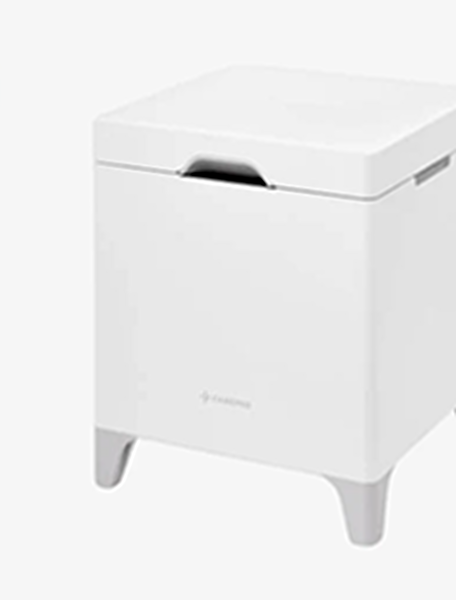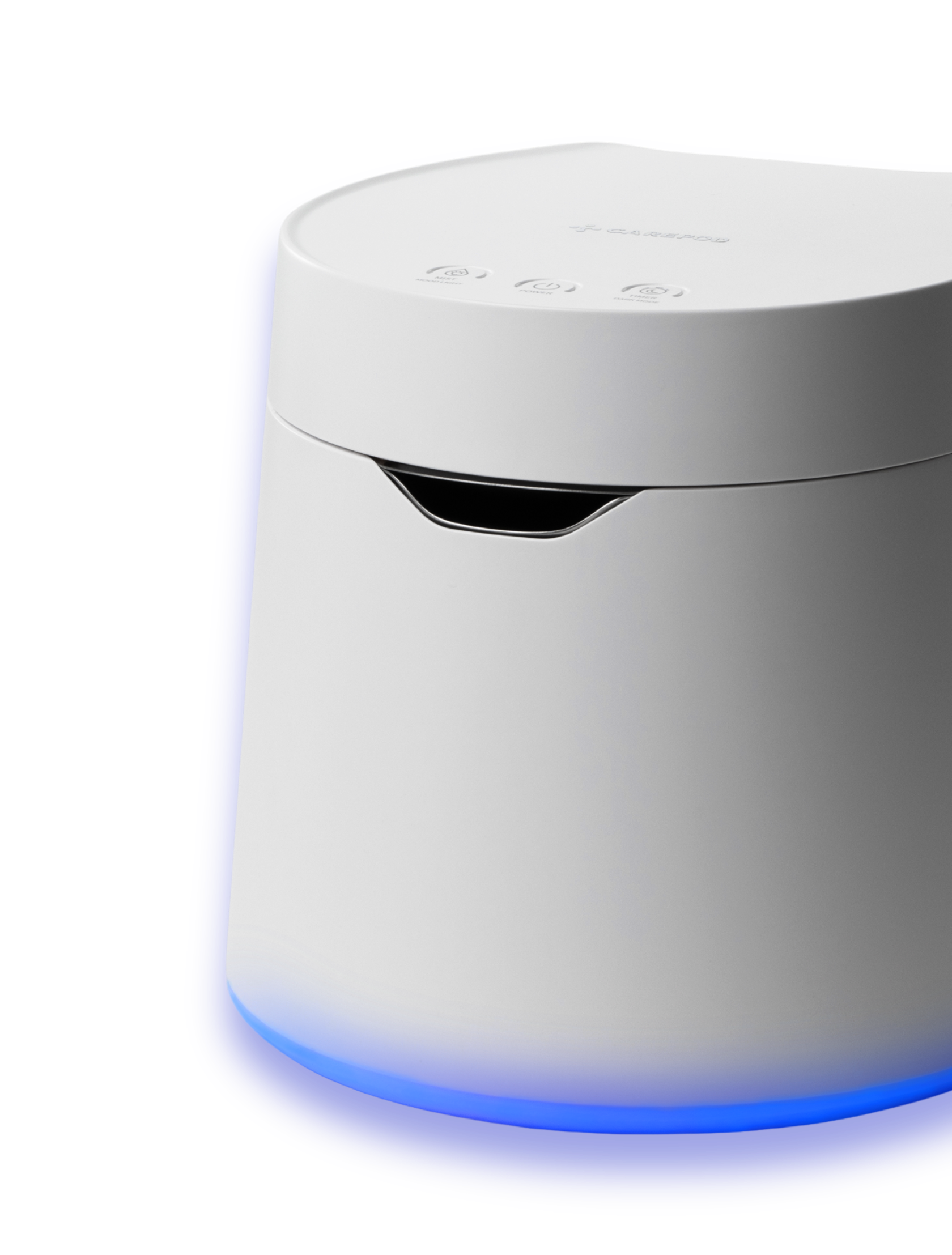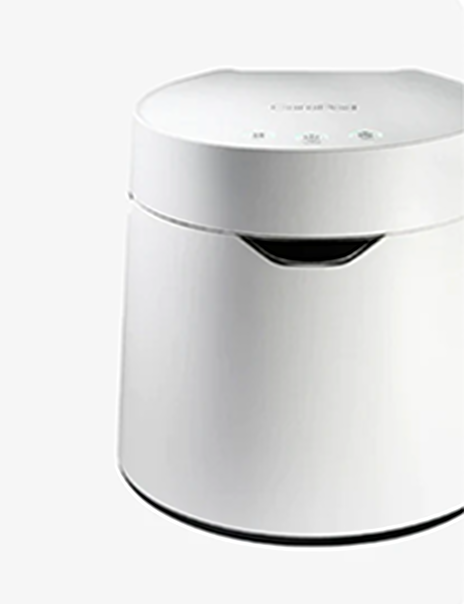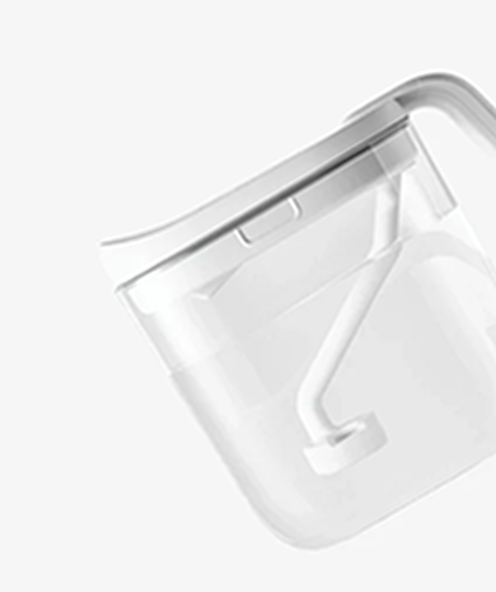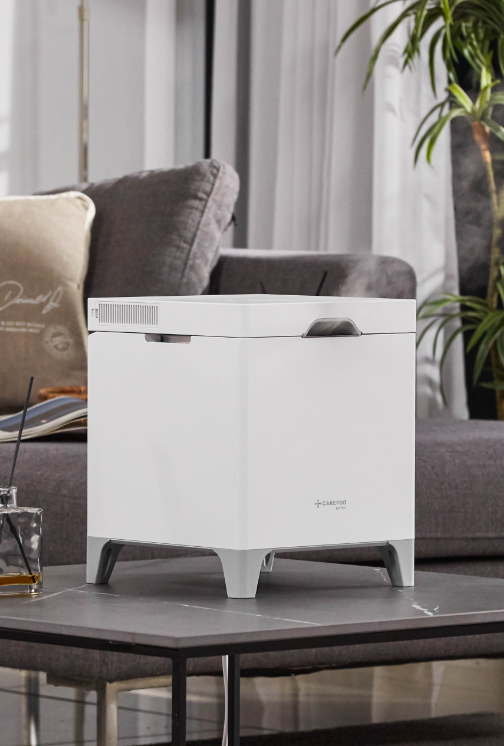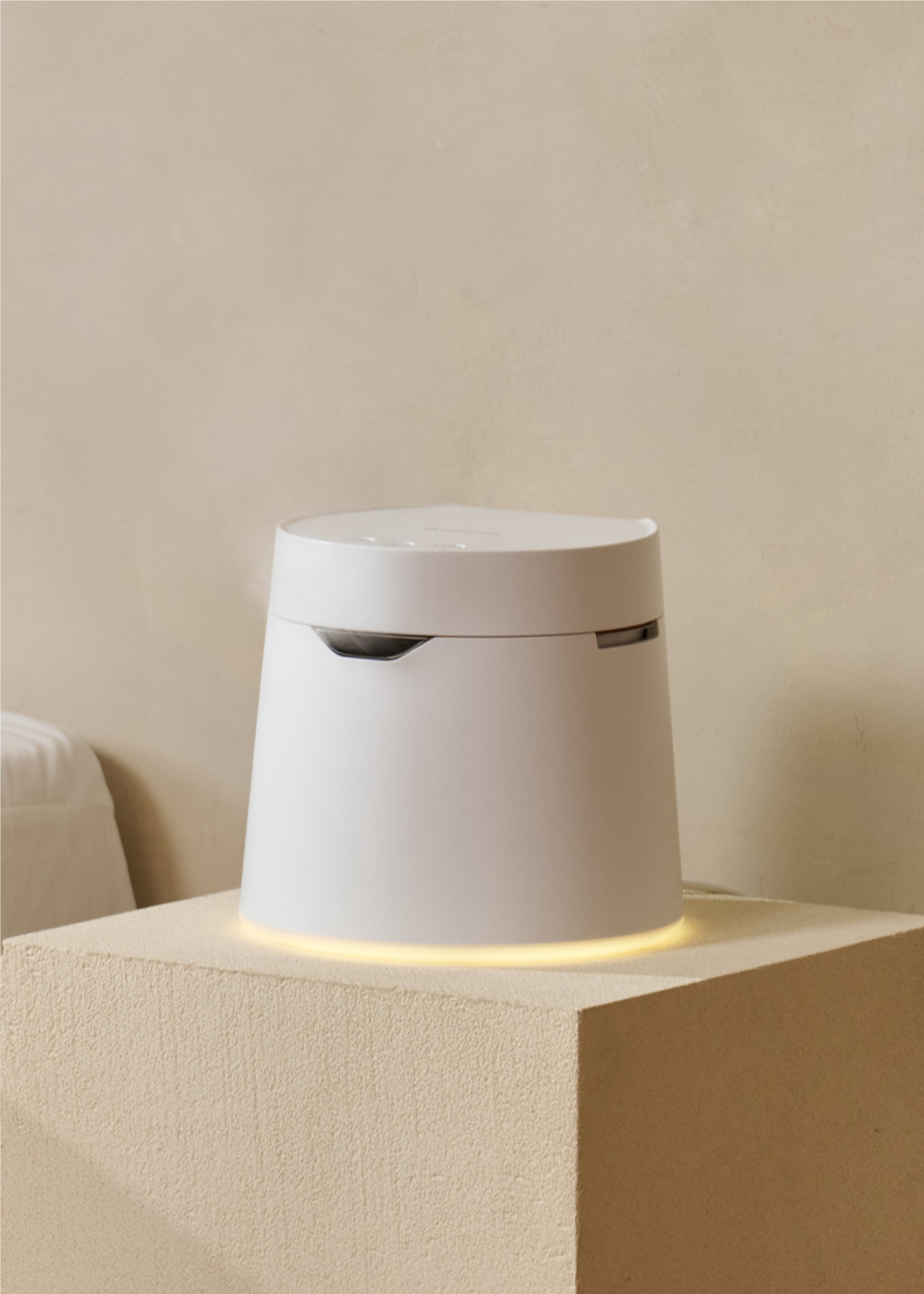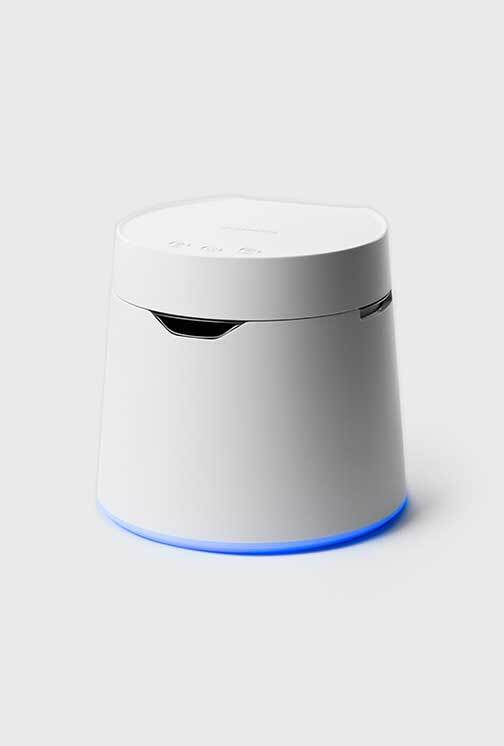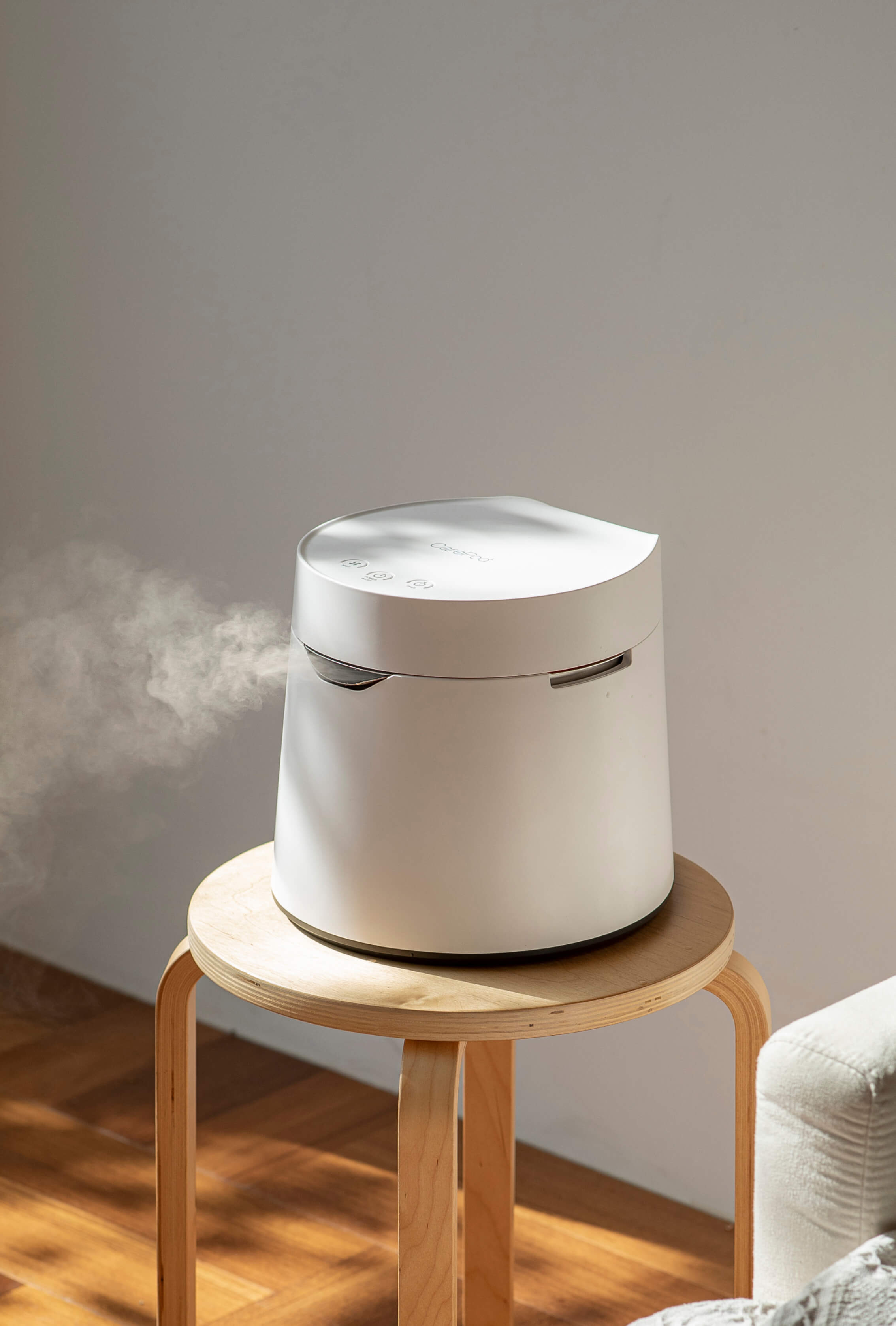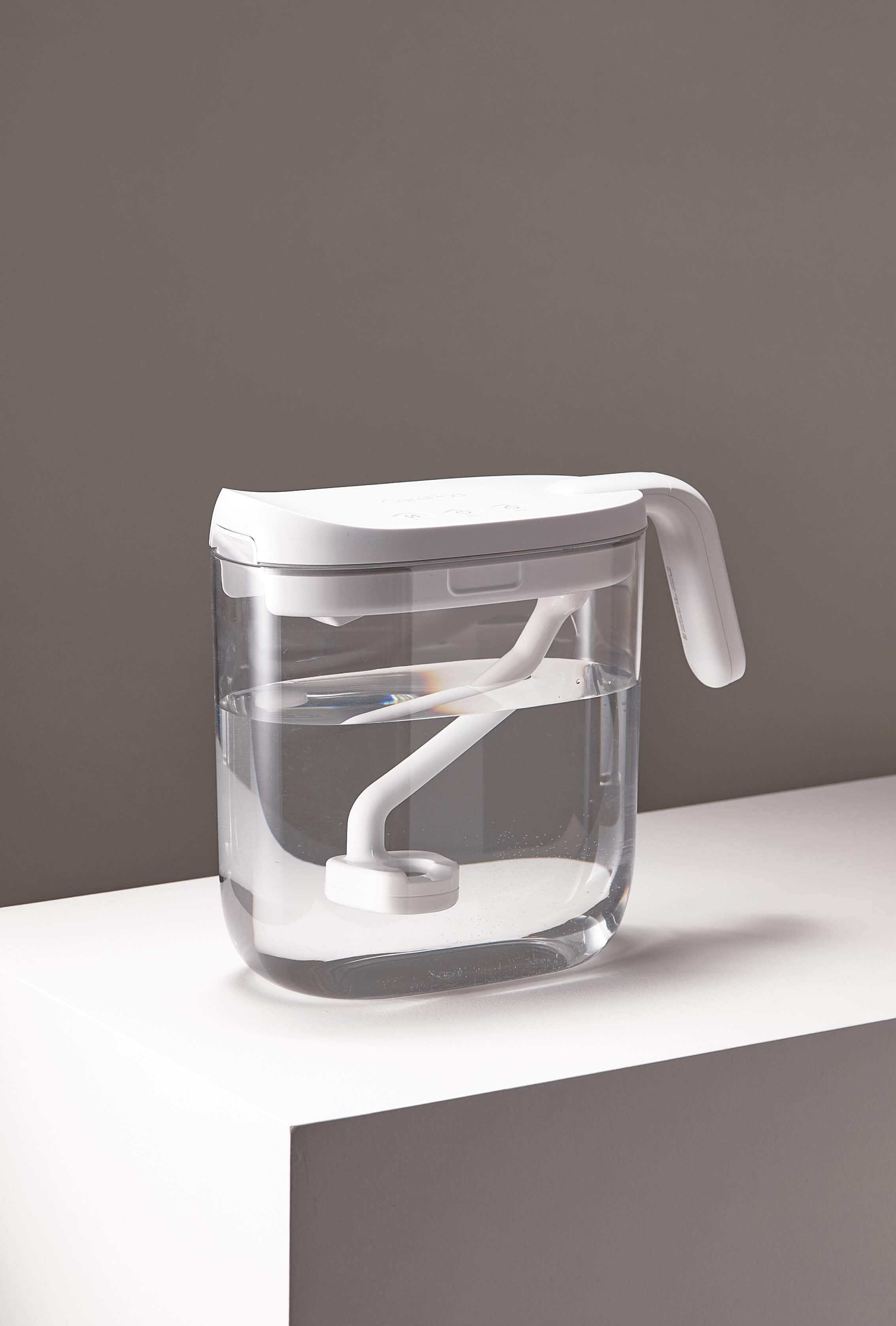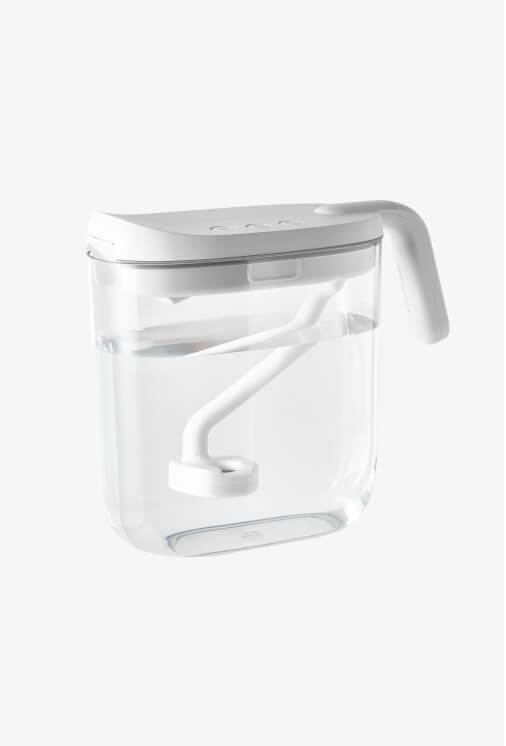REVIEWED: Canopy Humidifier vs. Carepod One

A humidifier can be an extremely beneficial addition to your home. They flaunt a multitude of proven benefits, such as cold and allergy relief, hydration to hair and skin, and reduced risk of infections.
It has become increasingly clear that the key to maintaining health and wellness is not just exercise and nutrition, but cultivating a proper indoor environment. So, naturally, the next step is to purchase your own humidifier!
Easy? Anyone confronted with the list of Google results knows selecting a model is anything but.

No need to worry -- we're here to help.
In our "REVIEWED" series, we are collecting all the information you need about your Humidifier options, so you don't have to. This way, when it comes time, you can make the purchase that makes the most sense for your needs.
Today, we will be discussing two types of humidifiers -- the Canopy Humidifier and our own Carepod One.
Operation

(Image Source | Canopy Humidifier)
Canopy and Carepod vary greatly in their operation. Thus, Carepod won't suit the preferences of every potential humidifier owner and the same goes for Canopy.
Canopy is an evaporative humidifier. What distinguishes an evaporative model is its method of expelling moisture. The water in the humidifier is first turned into water vapor inside and then sprayed into the air using a fan.

Meanwhile, Carepod is an ultrasonic humidifier. It uses an oscillating drum to produce high-frequency vibrations, which vaporize water. Then, a pressure unit disperses the mist into the surroundings.
There are various advantages to each model type. Ultrasonic humidifiers tend to be quieter than evaporative humidifiers and can release more moisture. However, this can become a problem if it results in over-humidified air.
Another point of difference between the humidifiers is that Canopy utilizes no-mist technology, while Carepod releases mist. This will really depend on preference. Non-mist humidifiers are better for customers who do not like any type of steam (cool or warm) in their household.
Finally, the hydration capacity of each humidifier is very similar. Canopy can service a room of up to 500 square feet, while Carepod effectively hydrates rooms over 300 square feet. Both can humidify indoors spaces around the size of a large room.
Features

(Image Source | Canopy Humidifier)
When choosing a humidifier, it is essential to consider what features you desire.
Run Time
The Canopy humidifier has the capacity to run anywhere from 18-36 hours, and must be manually turned off by the user if they have a specific time preference.
On Carepod humidifiers, there is a time scheduling function -- users can set the humidifier to run for 2, 4, or 6 hours before auto shut off. Carepod can also run up to 10 hours.
Aroma Diffusion
Some customers may want a humidifier with aroma diffusion, especially if they utilize aromatherapy or have a desired scent for their space.
Canopy has an aroma diffusion feature. Users can place a few drops of essential oils onto a puck component in the middle of the top grate to begin the diffusion process.

For Carepood, users can add a drop of essential oils onto the air filter on the side of the top lid for aroma diffusion.
Settings
Both humidifiers allow the user to determine their humidity level to their liking.
Canopy can be set to Auto mode, which will increase hydration at night, or to Low, Medium, or High. Similarly, there are Low, Medium, or High mist intensity options on Carepod.
Filters

(Image Source | Canopy Humidifier)
Canopy has a reusable paper based water filter. This must be replaced every 45 days and costs about $80 per year. Due to its innovative stainless steel tank design, Carepod does not need a water filter. It does have a small air filter at the air vent, but this does not need to be replaced.
With humidifiers that require water filters, the owner will have to periodically purchase and replace their filter. If this is not done, there is a high chance of contamination. Thus, using a filterless humidifier will not only be a big cash saver, but is significantly safer.
Design

(Image Source | Canopy Humidifier)
Canopy's dimensions are 10in x 7in x 8.5in. Canopy's sleek design is boxlike, with rounded edges. It is just small enough to fit on the top of a bedside table.
Meanwhile, Carepod is only a tiny bit larger, with dimensions of 10.82in x 10.23in x 9.30in. With a cylindrical body, it is roughly the size and shape of a rice cooker.

Carepod's innovative, patented design has received various notable awards. "This product offers a perfect example of how to place a complex functional device within a clean and simple outer design," offers iF World Design Guide. "The form is attractive yet also matches the function as a humidifier, while its color and outer design, including the top display and touch buttons, make intuitive usage possible."
Carepod's tank also holds a greater amount of water than that of Canopy. While Canopy's tank carries at most 2.5 liters, Carepod prides itself on its 1 Gallon capacity, which equals about 4 liters.
Unlike other portable humidifiers, neither Canopy nor Carepod require batteries to operate. Instead, both have power cords that plug into an outlet.
Cleaning

(Image Source | Canopy Humidifier)
A problem that various people encounter with certain humidifier models is mold growth. This is extremely dangerous -- mold can spread into the air alongside water droplets/vapor and cause nasal and lung infections.
Mold and bacteria growth arises when the humidifier cannot be fully cleaned. Thus, it is essential that customers can easily clean the entire humidifier -- reaching all the nooks and crannies.
Canopy users are instructed to wash the model by placing it in the dishwasher, as well as hand-washing a detachable piece. This makes the regular cleaning process very easy. However, a downside to this is that it is not possible for customers to see inside the humidifier, making it difficult to ensure that every spot has been cleaned.
Canopy also utilizes special technology to disinfect the appliance. The makers of Canopy invented what they call "Smart Persistent Airflow Technology," which they claim prevents mold growth. The humidifier also utilizes UV light.

Meanwhile, Carepod allows for ease of cleaning by hand. The device can be simply detached into three pieces -- the tank, vibrating element, and cover. These three parts are to be washed either with soap or sterilized in boiling water.
Furthermore, Carepod is made of a SS304 Premium Grade steel interior and, notably, the same kind of material used in hospital settings. Not only is it fully recyclable, it is also resistant to corrosion and disinfectable. In fact, Carepod's model has shown 99.99% sterilizability against bacterial growth in research trials, higher than that of any leading brand.
Price
Canopy has three separate price options. To purchase the humidifier alone, the cost is $150. If purchased alongside a filter subscription or aroma subscription, Canopy costs $125. The price of a filter subscription is $10 every 45 days and the price of a filter and aroma subscription together is $25 every 45 days. This means that the annual price of a Canopy humidifier (assuming the customers purchases filters every 45 days) is anywhere from $197 to $327.
On the other hand, the price of a Carepod humidifier is $275. As no filters need to be purchased, there are no additional costs for upkeep.
Both products have a 30 day return policy. Canopy specifies that, in order to be returned, the device must be unused, with tags, in original packaging.
In addition to its 30 day return policy, Carepod has a 1-year Warranty. So, if customers are dissatisfied with their device or if the humidifier breaks, they can replace it for a new one.
Final Thoughts
All in all, both the Canopy Humidifier and Carepod One are excellent purchases. Just keep in mind: Carepod might not be the best fit for everyone and the same goes for Canopy.
While the two tend to be similar in design and price, there are key differences when it comes to operation and cleaning.
Canopy is the perfect product for the customer that doesn't just want a humidifier. With its no-mist technology, aroma diffusion capacity, and dishwasher cleaning, it places much of its focus on servicing specific customer needs.
Meanwhile, Carepod emphasizes humidifying and humidifying well. Its innovative, compact design makes it durable and portable, without the upkeep required of Canopy. Carepod's specially developed technology and stainless steel material ensure that it is hygienic and effective, while still being an affordable option.
No matter what you choose, a humidifier is sure to add value to your indoor space. With all it can do to improve your health and well-being, it will be a purchase you won’t regret.
